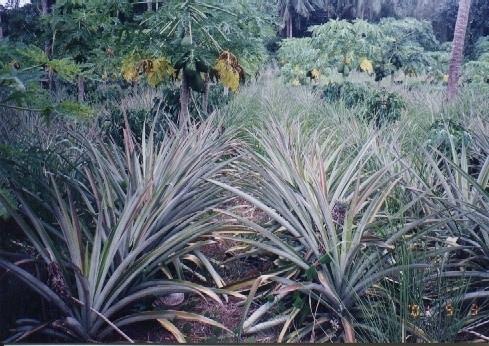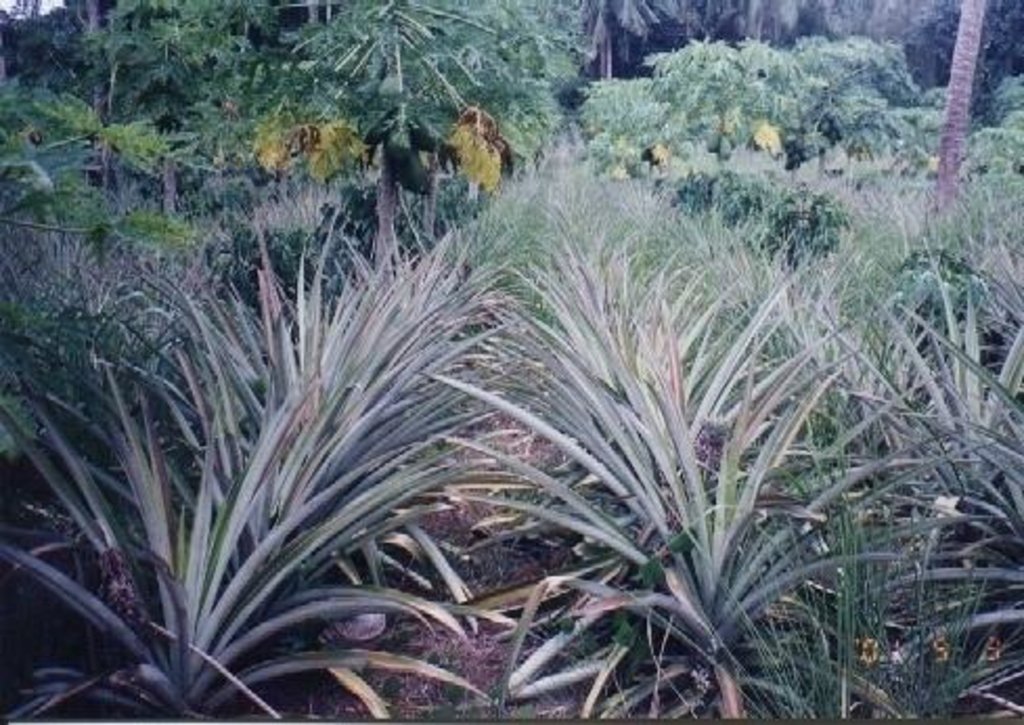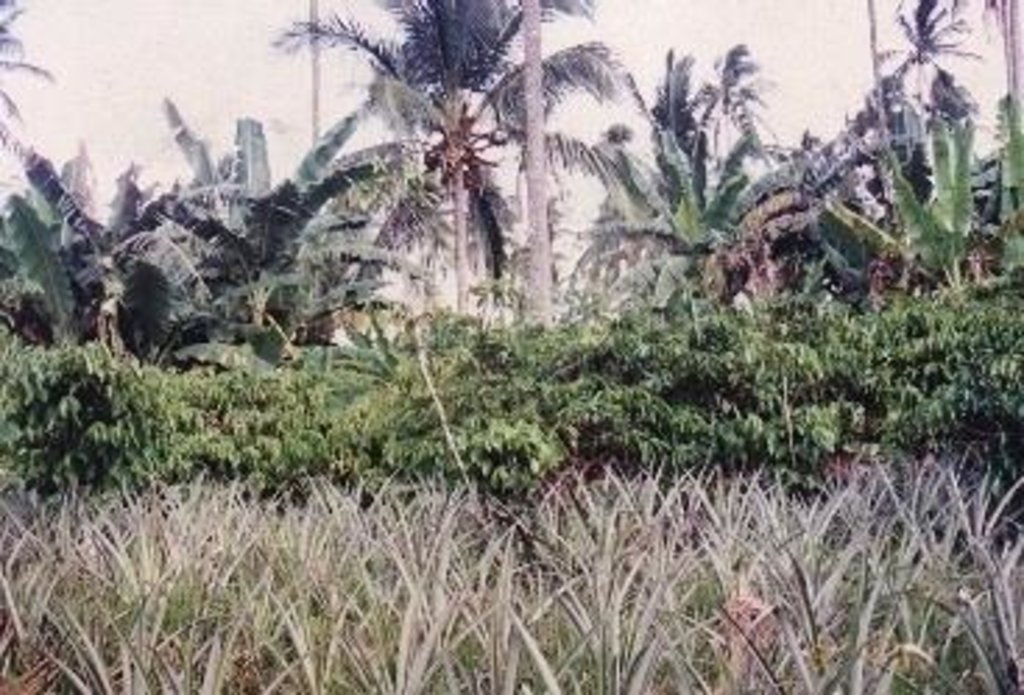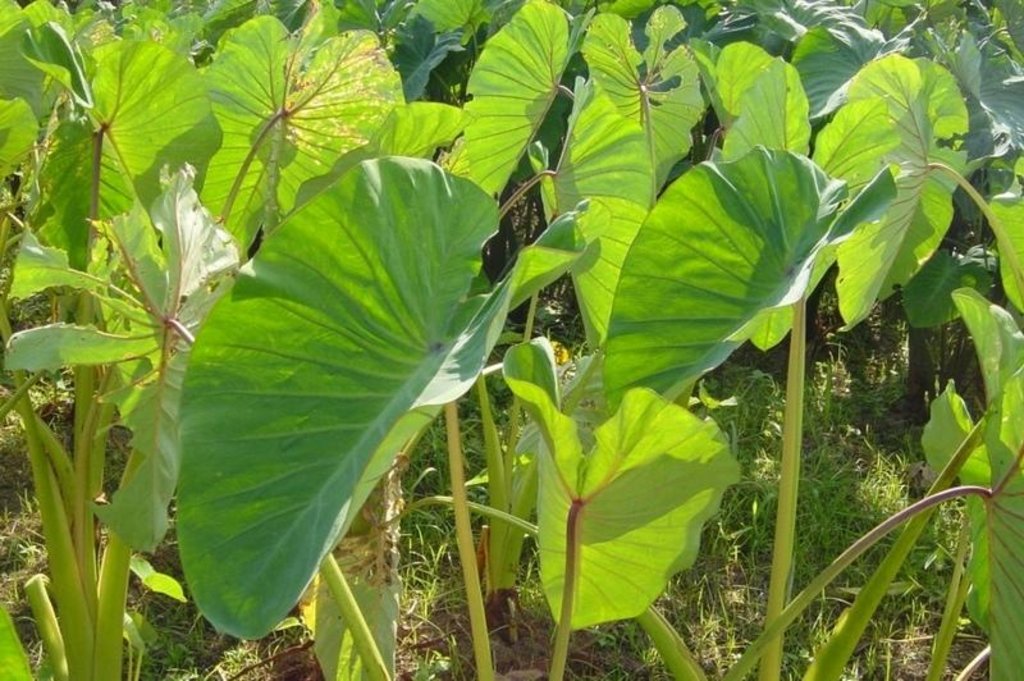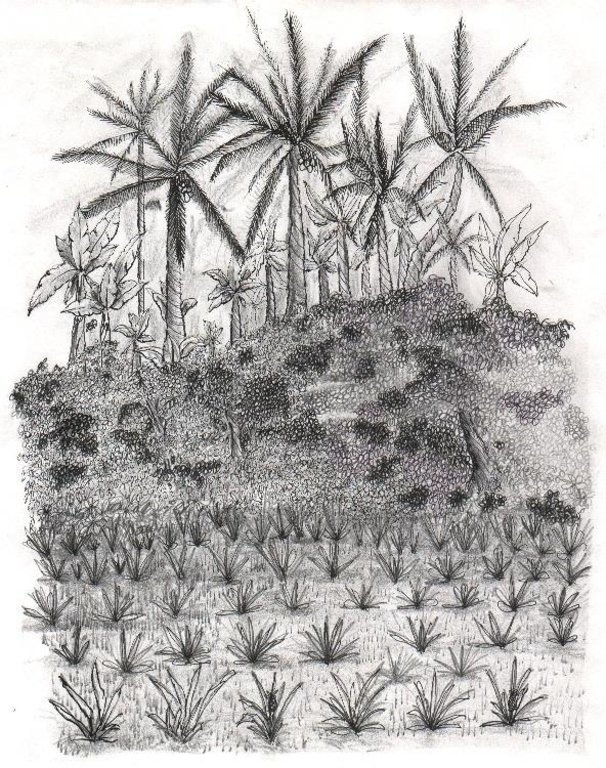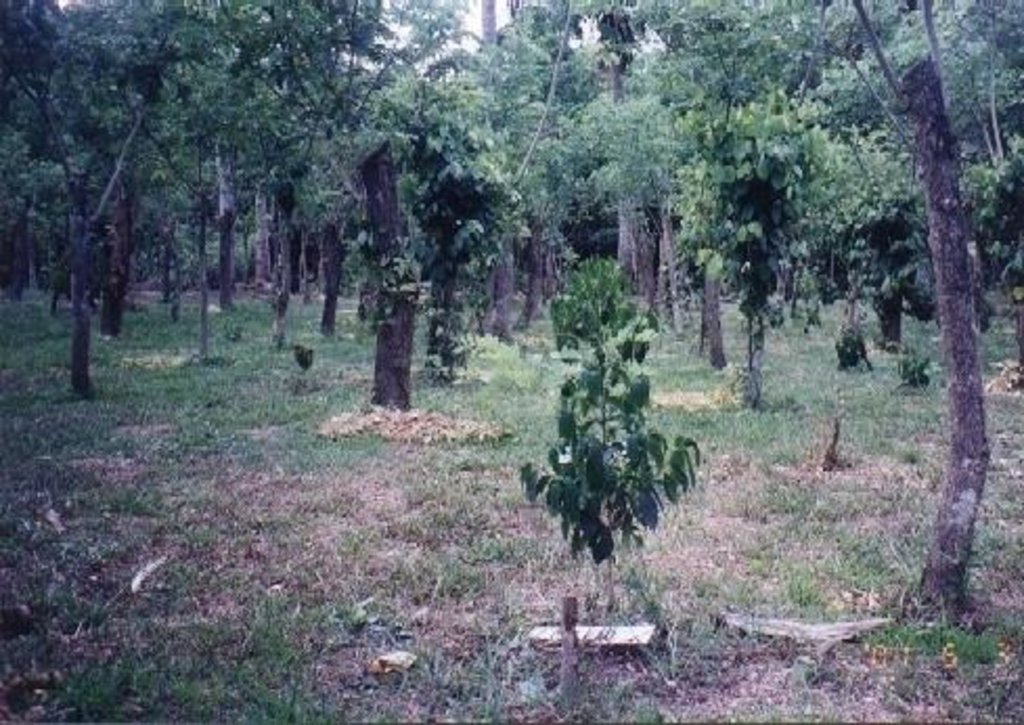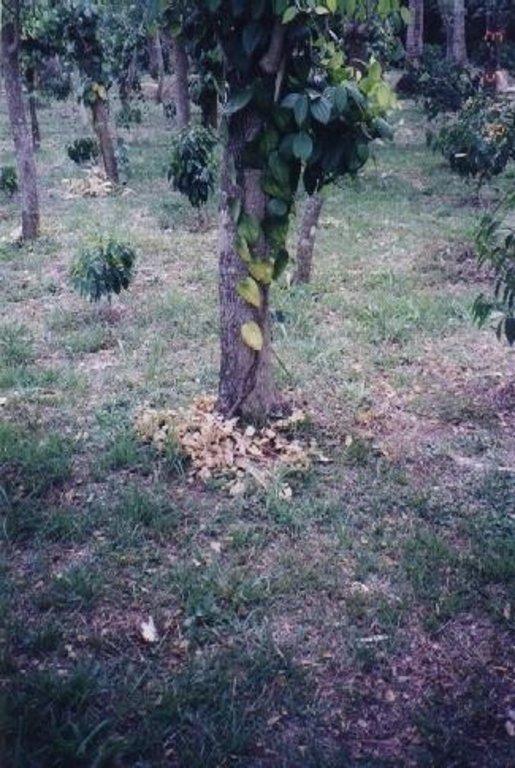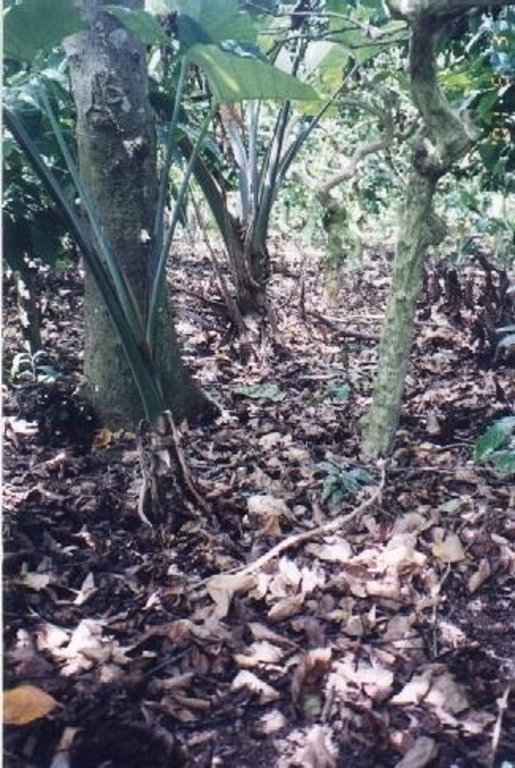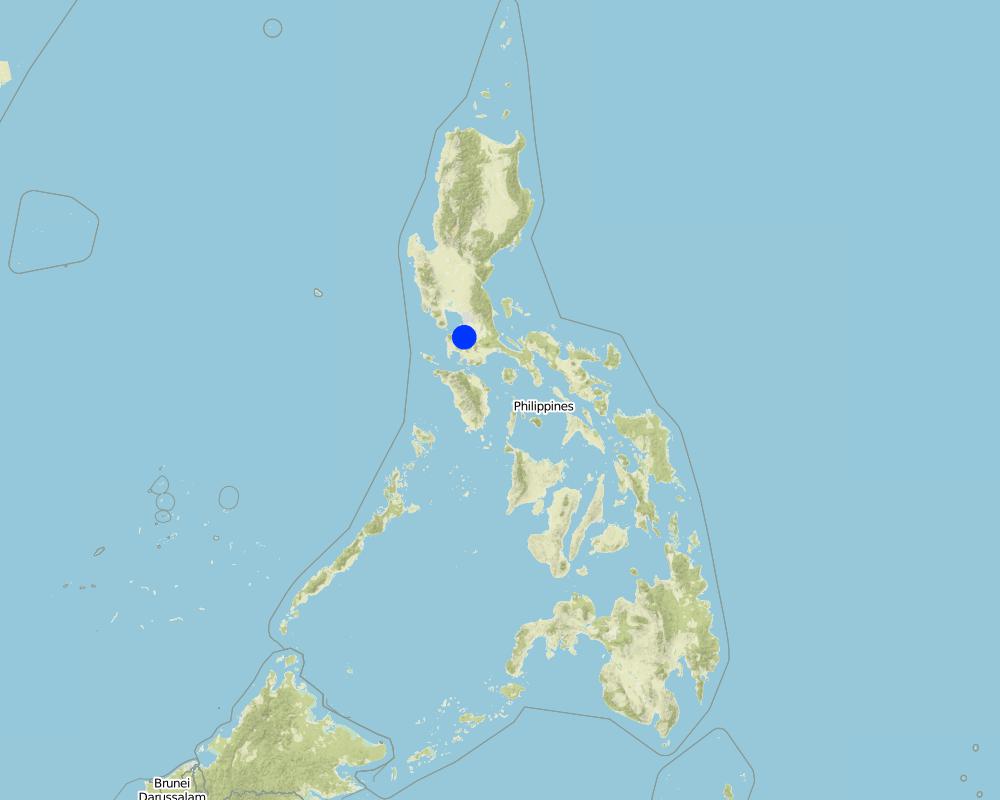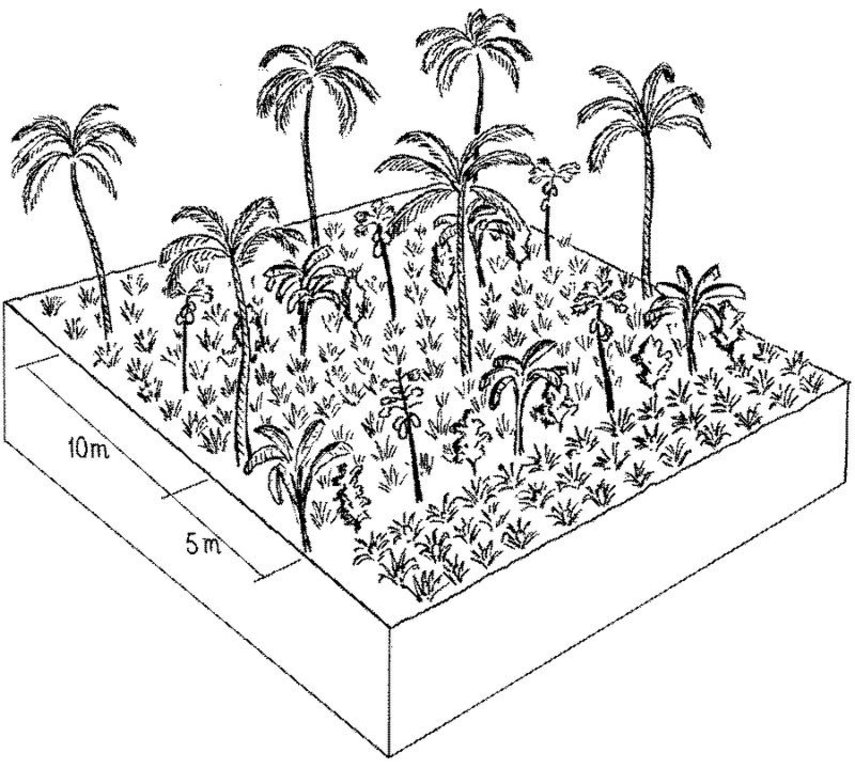Multi-Storey Cropping [Philippines]
- Creation:
- Update:
- Compiler: Philippine Overview of Conservation Approaches and Technologies
- Editor: –
- Reviewers: Deborah Niggli, Alexandra Gavilano
Maramihang Pagtatanim or Planting in Great Numbers
technologies_1103 - Philippines
View sections
Expand all Collapse all1. General information
1.2 Contact details of resource persons and institutions involved in the assessment and documentation of the Technology
SLM specialist:
Rondal Jose
Bureau of Soils and Water Management
Philippines
SLM specialist:
Mojica Alejandro
Cavite State University
Philippines
SLM specialist:
Rojales Joseph
Bureau of Soils and Water Management
Philippines
Name of project which facilitated the documentation/ evaluation of the Technology (if relevant)
Book project: where the land is greener - Case Studies and Analysis of Soil and Water Conservation Initiatives Worldwide (where the land is greener)Name of the institution(s) which facilitated the documentation/ evaluation of the Technology (if relevant)
Bureau of Soils and Water Management (Bureau of Soils and Water Management) - PhilippinesName of the institution(s) which facilitated the documentation/ evaluation of the Technology (if relevant)
Cavite State University (CvSU) - PhilippinesName of the institution(s) which facilitated the documentation/ evaluation of the Technology (if relevant)
Farming Systems and Soil Resources Institute, University of the Philippines Los (Farming Systems and Soil Resources Institute, University of the Philippines Los) - Philippines1.3 Conditions regarding the use of data documented through WOCAT
The compiler and key resource person(s) accept the conditions regarding the use of data documented through WOCAT:
Yes
1.4 Declaration on sustainability of the described Technology
Is the Technology described here problematic with regard to land degradation, so that it cannot be declared a sustainable land management technology?
No
2. Description of the SLM Technology
2.1 Short description of the Technology
Definition of the Technology:
Cultivating a mixture of crops with different heights (multi-storey) and growth characteristics which together optimise the use of soil, moisture and space.
2.2 Detailed description of the Technology
Description:
Under the maramihang pagtatanim multi-storey cropping system, perennial crops (coconut, banana, coffee, papaya, pineapple) and annuals/biennials (root crops: taro, yam, sweet potato etc) are interplanted to maximise productivity and income. This is most applicable where farms are small and the system needs to be intensive. In this particular area, Cavite, coconuts are usually planted first. When they reach a height of 4.5 meters (after 3-4 years), bananas, coffee and/or papaya are planted underneath. Black pepper may also be part of the system. After sufficient space has developed at ground level in about three to four years, root crops are planted. At full establishment, the system develops different layers: coconut (tallest) followed by banana, coffee, papaya (middle), root crops and pineapple (lowest). In recent years, because of its relatively low productivity and decreasing price, coconut has tended to be replaced in the system with higher value crops like the fruit tree santol (Sandoricum koetjape), papaya and sometimes black pepper. However most multi-storey farms adhere to no specific planting layout. The multi-storey agroforestry system is intended to make the best use of resources (soil, moisture and space) for increased farm income. It is also very effective against soil erosion. Previously, continuous monocropping of annual crops resulted in erosion and serious soil fertility decline. Even though the land is sloping and rainfall during the monsoon is extremely intensive, multi-storey cropping provides adequate soil cover throughout the year, protecting the land from erosion.
Fertilization, weeding and pruning are necessary elements of maintenance. ‘Natural’ mulching through fallen leaves from leguminous trees helps restore and maintain soil fertility The system is applied in a volcanic-derived soil with distinct wet and dry periods (6 months wet season, 6 months dry season). There is the risk of a destructive typhoon every 10 years. Farm income is relatively high, but labour and input costs are also high - and the technology is mostly used by relatively wealthy landowners. There is strong spontaneous adoption, as maramihang pagtatanim has been proven to be effective and remunerative. This technology has been practiced in Cavite since the 1970s. Implementation is by individual farmers with strong extension support from the Local Government Units (LGUs), NGOs and the Cavite State University.
2.3 Photos of the Technology
2.5 Country/ region/ locations where the Technology has been applied and which are covered by this assessment
Country:
Philippines
Region/ State/ Province:
Philippines, Cavite
Further specification of location:
Cavite
Specify the spread of the Technology:
- evenly spread over an area
If the Technology is evenly spread over an area, specify area covered (in km2):
40.0
If precise area is not known, indicate approximate area covered:
- 10-100 km2
Comments:
Total area covered by the SLM Technology is 40 km2.
Six adjacent municipalities are practicing multi-storey cropping as a system. This is meant to increase income particularly for small farmers.
Map
×2.6 Date of implementation
If precise year is not known, indicate approximate date:
- more than 50 years ago (traditional)
2.7 Introduction of the Technology
Specify how the Technology was introduced:
- as part of a traditional system (> 50 years)
Comments (type of project, etc.):
It evolved in the area due to necessity.
3. Classification of the SLM Technology
3.1 Main purpose(s) of the Technology
- improve production
- reduce, prevent, restore land degradation
3.2 Current land use type(s) where the Technology is applied
Land use mixed within the same land unit:
Yes
Specify mixed land use (crops/ grazing/ trees):
- Agroforestry

Cropland
Number of growing seasons per year:
- 2
Specify:
Longest growing period in days: 240, Longest growing period from month to month: May - Jan; Second longest growing period in days: 210, Second longest growing period from month to month: May - Dec

Forest/ woodlands
Comments:
Major land use problems (compiler’s opinion): Productivity decline, unstable prices of agricultural products and high costs of inputs are the main land use problems. Inputs also have to be increased to maintain the same yield level in annual cropping systems. There is a severe land use competition: a large proportion of the land is being converted to non-agricultural uses, especially residential and industrial areas because of the proximity to the rapidly expanding capital.
Major land use problems (land users’ perception): Productivity decline and unfavourable prices of agricultural products. High costs of inputs.
3.4 Water supply
Water supply for the land on which the Technology is applied:
- rainfed
3.5 SLM group to which the Technology belongs
- agroforestry
- improved ground/ vegetation cover
3.6 SLM measures comprising the Technology

agronomic measures
- A1: Vegetation/ soil cover
- A2: Organic matter/ soil fertility
3.7 Main types of land degradation addressed by the Technology

soil erosion by water
- Wt: loss of topsoil/ surface erosion

chemical soil deterioration
- Cn: fertility decline and reduced organic matter content (not caused by erosion)
3.8 Prevention, reduction, or restoration of land degradation
Specify the goal of the Technology with regard to land degradation:
- prevent land degradation
- reduce land degradation
4. Technical specifications, implementation activities, inputs, and costs
4.1 Technical drawing of the Technology
Technical specifications (related to technical drawing):
Multi-storey cropping includes various species interplanted systematically to optimise use of resources: pineapple and other
root crops (lowest storey); rows of banana trees, coffee and papaya (middle storey); rows of coconut (highest storey). Note: in practice farmers adjust this layout to meet their needs.
Technical knowledge required for field staff / advisors: moderate
Technical knowledge required for land users: moderate
Main technical functions: control of raindrop splash, improvement of ground cover
Secondary technical functions: control of dispersed runoff: retain / trap, increase in organic matter
Mixed cropping / intercropping
Material/ species: coconut, papaya, coffee, banana, pineapple, black pepper, taro, yam...
Quantity/ density: 2500
Remarks: in rows random
Vegetative measure: tree/shrub cover (multi-storey, aligned)
Vegetative material: F : fruit trees / shrubs
Vegetative measure: Vegetative material: F : fruit trees / shrubs
Fruit trees / shrubs species: coconut, coffee, banana, pineapple, black pepper
Author:
Mats Gurtner
4.2 General information regarding the calculation of inputs and costs
other/ national currency (specify):
Peso
If relevant, indicate exchange rate from USD to local currency (e.g. 1 USD = 79.9 Brazilian Real): 1 USD =:
50.0
Indicate average wage cost of hired labour per day:
3.00
4.3 Establishment activities
| Activity | Timing (season) | |
|---|---|---|
| 1. | 1. Planting of tallest storey (coconut). | early rainy season |
| 2. | 2. Planting of middle storey (coffee and banana). | early rainy season |
| 3. | 3. Planting of lowest storey (pineapple). | early rainy season |
| 4. | 4. Planting of lowest storey continued (root crops). | early rainy season |
4.4 Costs and inputs needed for establishment
| Specify input | Unit | Quantity | Costs per Unit | Total costs per input | % of costs borne by land users | |
|---|---|---|---|---|---|---|
| Labour | labour | ha | 1.0 | 150.0 | 150.0 | 100.0 |
| Equipment | animal traction | ha | 1.0 | 50.0 | 50.0 | 100.0 |
| Equipment | tools | ha | 1.0 | 40.0 | 40.0 | 100.0 |
| Plant material | seedlings | ha | 1.0 | 840.0 | 840.0 | 100.0 |
| Fertilizers and biocides | fertilizer | ha | 1.0 | 160.0 | 160.0 | 100.0 |
| Fertilizers and biocides | biocides | ha | 1.0 | 30.0 | 30.0 | 100.0 |
| Fertilizers and biocides | compost/manure | ha | 1.0 | 120.0 | 120.0 | 100.0 |
| Total costs for establishment of the Technology | 1390.0 | |||||
| Total costs for establishment of the Technology in USD | 27.8 | |||||
Comments:
Duration of establishment phase: 60 month(s)
4.5 Maintenance/ recurrent activities
| Activity | Timing/ frequency | |
|---|---|---|
| 1. | 1. Pruning. | |
| 2. | 3. Harvesting. | |
| 3. | 2.Weeding | |
| 4. | 4. Spraying. | |
| 5. | 5. Fertilizing. |
4.6 Costs and inputs needed for maintenance/ recurrent activities (per year)
| Specify input | Unit | Quantity | Costs per Unit | Total costs per input | % of costs borne by land users | |
|---|---|---|---|---|---|---|
| Labour | labour | ha | 1.0 | 300.0 | 300.0 | 100.0 |
| Fertilizers and biocides | fertilizer | ha | 1.0 | 160.0 | 160.0 | 100.0 |
| Fertilizers and biocides | biocides | ha | 1.0 | 30.0 | 30.0 | 100.0 |
| Total costs for maintenance of the Technology | 490.0 | |||||
| Total costs for maintenance of the Technology in USD | 9.8 | |||||
Comments:
Machinery/ tools: animal draft wooden plough, machete, iron bar and spade, machetes, harrows, bolo.
Cost was calculated assuming a per hectare population of 100 coconuts, 400 coffee plants and 3,000 pineapples.
Maintenance activities entail more work than during the establishment phase. Note that the establishment phase usually lasts for 4-5 years, so the labour is spread, unlike during the maintenance phase when all of the components have to be attended to.
4.7 Most important factors affecting the costs
Describe the most determinate factors affecting the costs:
Labor is the most crucial especially during land preparation and planting, maintenance and harvesting.
5. Natural and human environment
5.1 Climate
Annual rainfall
- < 250 mm
- 251-500 mm
- 501-750 mm
- 751-1,000 mm
- 1,001-1,500 mm
- 1,501-2,000 mm
- 2,001-3,000 mm
- 3,001-4,000 mm
- > 4,000 mm
Agro-climatic zone
- humid
Thermal climate class: tropics
5.2 Topography
Slopes on average:
- flat (0-2%)
- gentle (3-5%)
- moderate (6-10%)
- rolling (11-15%)
- hilly (16-30%)
- steep (31-60%)
- very steep (>60%)
Landforms:
- plateau/plains
- ridges
- mountain slopes
- hill slopes
- footslopes
- valley floors
Altitudinal zone:
- 0-100 m a.s.l.
- 101-500 m a.s.l.
- 501-1,000 m a.s.l.
- 1,001-1,500 m a.s.l.
- 1,501-2,000 m a.s.l.
- 2,001-2,500 m a.s.l.
- 2,501-3,000 m a.s.l.
- 3,001-4,000 m a.s.l.
- > 4,000 m a.s.l.
5.3 Soils
Soil depth on average:
- very shallow (0-20 cm)
- shallow (21-50 cm)
- moderately deep (51-80 cm)
- deep (81-120 cm)
- very deep (> 120 cm)
Soil texture (topsoil):
- medium (loamy, silty)
Topsoil organic matter:
- high (>3%)
- medium (1-3%)
5.6 Characteristics of land users applying the Technology
Market orientation of production system:
- mixed (subsistence/ commercial)
- commercial/ market
Off-farm income:
- 10-50% of all income
Relative level of wealth:
- average
- rich
Level of mechanization:
- manual work
- animal traction
Indicate other relevant characteristics of the land users:
Population density: > 500 persons/km2
Annual population growth: 2% - 3%
10% of the land users are very rich and own 40% of the land.
60% of the land users are rich and own 40% of the land.
20% of the land users are average wealthy and own 15% of the land.
10% of the land users are poor and own 5% of the land.
Off-farm income specification: remittances from employment of at least one member of the household. Trading is also important.
5.7 Average area of land used by land users applying the Technology
- < 0.5 ha
- 0.5-1 ha
- 1-2 ha
- 2-5 ha
- 5-15 ha
- 15-50 ha
- 50-100 ha
- 100-500 ha
- 500-1,000 ha
- 1,000-10,000 ha
- > 10,000 ha
Comments:
Landholding is continuosly being sub-divided due to inheritance
5.8 Land ownership, land use rights, and water use rights
Land ownership:
- individual, titled
Land use rights:
- individual
6. Impacts and concluding statements
6.1 On-site impacts the Technology has shown
Socio-economic impacts
Production
crop production
Comments/ specify:
due to high plant population (density)
wood production
Income and costs
farm income
Comments/ specify:
Farmers in the area are coming the richest
workload
Comments/ specify:
during planting/harvesting
Other socio-economic impacts
Input constraints
Comments/ specify:
system is capital intensive
Socio-cultural impacts
community institutions
Comments/ specify:
through the formation of cooperatives or farmers organisation
national institutions
SLM/ land degradation knowledge
Comments/ specify:
through the involvement of line agencies and strengthening of research component
Ecological impacts
Water cycle/ runoff
surface runoff
Quantity before SLM:
70
Quantity after SLM:
40
Soil
soil cover
Comments/ specify:
almost 100 % soil cover
soil loss
Quantity before SLM:
10
Quantity after SLM:
0
Comments/ specify:
reduced run-offf
Biodiversity: vegetation, animals
plant diversity
Climate and disaster risk reduction
wind velocity
Other ecological impacts
Soil fertility
Comments/ specify:
organic matter accumulation
6.2 Off-site impacts the Technology has shown
reliable and stable stream flows in dry season
Comments/ specify:
increase aquifer recharge
downstream flooding
Comments/ specify:
run-off is reduced
downstream siltation
groundwater/ river pollution
wind transported sediments
Comments/ specify:
100 % protection of surface
6.4 Cost-benefit analysis
How do the benefits compare with the establishment costs (from land users’ perspective)?
Short-term returns:
slightly positive
Long-term returns:
very positive
How do the benefits compare with the maintenance/ recurrent costs (from land users' perspective)?
Short-term returns:
very positive
Long-term returns:
very positive
6.5 Adoption of the Technology
Comments:
100% of land user families have adopted the Technology without any external material support
1000 land user families have adopted the Technology without any external material support
There is a strong trend towards spontaneous adoption of the Technology. The technology has been proven to be very effective
6.7 Strengths/ advantages/ opportunities of the Technology
| Strengths/ advantages/ opportunities in the land user’s view |
|---|
| Generates high farm income |
| Failure of one crop component can be compensated by the other component |
| Strengths/ advantages/ opportunities in the compiler’s or other key resource person’s view |
|---|
| The technology is flexible. It can be modified to suit market condition. Failure of one crop component can be compensated by other components (improved food security) |
| It maintains soil fertility through the recycling of nutrients |
| It is a very effective way of using and conserving water |
| Strong research and development: because of its importance in the economy, the technology has spawned various research activities |
6.8 Weaknesses/ disadvantages/ risks of the Technology and ways of overcoming them
| Weaknesses/ disadvantages/ risks in the land user’s view | How can they be overcome? |
|---|---|
| High investment cost | Government to provide low interest production loans (seeds, fertilizers). |
| Highly fluctuating farm prices | Spread out production schedule. Target off-season harvesting of crop (eg pineapple). |
| Pest and diseases (eg papaya virus, which may have developed because it has been part of the system for a long time) | Intensified research and development. |
| Weaknesses/ disadvantages/ risks in the compiler’s or other key resource person’s view | How can they be overcome? |
|---|---|
| Prone to typhoon damage | Establishment of windbreaks: Leguminous trees such as Acacias could provide wind protection for lower crops like papaya or coffee. |
| High labour requirement (eg weeding, harvesting).Weeding may be reduced for some components (eg coffee), but pineapple always requires difficult (due to its thorny leaves) and intensive weeding. | (1) Use labour-reducing techniques (eg mulching), (2) spread activities over the growing season. |
7. References and links
7.1 Methods/ sources of information
- field visits, field surveys
- interviews with land users
When were the data compiled (in the field)?
15/06/2001
7.2 References to available publications
Title, author, year, ISBN:
Field Report: Multi-Storey Cropping System of Silang, Cavite, Philippines
Available from where? Costs?
Bureau of Soils and Water Management, Diliman, Quezon City, Philippines
Title, author, year, ISBN:
FAO and IIRR. Resource management for upland areas in Southeast Asia. FARM Field Document 2. 1995.
Available from where? Costs?
Food and Agriculture Organisation of the United Nations, Bangkok, Thailand and International Institute of Rural Reconstruction, Silang, Cavite, Philippines.
Links and modules
Expand all Collapse allLinks
No links
Modules
No modules


